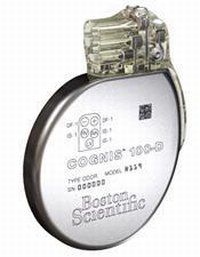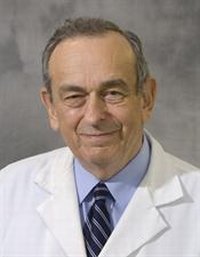Researchers Pinpoint Patients Who Receive Greatest Benefit from Heart Failure Treatment
Researchers Pinpoint Patients Who Receive Greatest Benefit from Heart Failure Treatment


Wojciech Zareba, M.D., Ph.D.
March 01, 2011.
Mild heart failure patients with a particular condition that results in disorganized electrical activity throughout the heart benefit substantially from cardiac resynchronization therapy with defibrillator (CRT–D), according to a study published in the American Heart Association journal Circulation.
In patients with the condition, known as left bundle branch block or LBBB, CRT-D therapy reduced heart failure progression and the risk of ventricular tachyarrhythmias, fast and potentially life-threatening heart rhythms. Heart failure patients without LBBB did not receive any benefit from the therapy.
The analysis, based on the major study which tested the device – the MADIT-CRT trial – led the FDA to extend the approval of the CRT-D in September 2010 to patients with mild heart failure and LBBB to prevent progression to advanced heart failure. The device, developed by Boston Scientific, was originally approved to treat patients with severe heart failure.

- Cardiac resynchronization therapy with defibrillator (CRT–D)
“This study allowed us to identify the specific set of patients that receive the greatest benefit from this device,” said Wojciech Zareba, M.D., Ph.D., lead study author and director of the Heart Research Follow-up Program at the University of Rochester Medical Center. “Our analysis highlights the fact that this therapy is not equally effective in all mild heart failure patients and was the basis of the FDA’s approval of the therapy only in patients with left bundle branch block.”
Zareba’s team found that patients with LBBB who received CRT-D therapy had a significant 53 percent reduction in the risk of a heart failure event, such as being hospitalized with heart failure symptoms, or death, compared to LBBB patients who only received an implantable cardioverter defibrillator (ICD). The risk of ventricular tachyarrhythmias was also considerably less in LBBB patients with CRT-D.
CRT-D therapy combines an ICD, which senses dangerous abnormal heart rhythms and attempts to shock the heart back into a normal rhythm, with cardiac resynchronization therapy (CRT), which coordinates the beating of the heart so it can pump blood throughout the body more effectively.

- Arthur J. Moss, M.D.
The study included 1,817 patients and researchers analyzed electrocardiograms – maps of the heart’s electrical activity – to determine which patients had electrical disturbances and what type. Seventy percent of study participants had LBBB. LBBB patients were more often female and had higher rates of non-ischemic heart disease, a disorder typically characterized by inflammatory scarring of the heart muscle.
Study authors evaluated the effects of CRT-D versus ICD therapy in patients with and without LBBB. They found that in LBBB patients, CRT-D therapy effectively prevented deterioration of the heart, otherwise known as cardiac remodeling, by preventing enlargement of the heart with more effective contraction of the heart.
“We believe this therapy is so effective in patients with LBBB because their hearts don’t contract in a synchronous way, rather, the pumping action is quite out of sync,” noted Zareba. “CRT-D therapy paces the heart and makes these patients much better very quickly.”
Beyond mild heart failure patients, the results are leading experts to rethink current guidelines recommending the use of CRT-D therapy for all advanced heart failure patients. In this age of personalized medicine, as treatments are continually directed towards subsets of patients with particular characteristics or biologic markers, the group of advanced heart failure patients that receive CRT-D therapy may be narrowed to those with LBBB, as well.
The MADIT-CRT trial, led by Arthur J. Moss, M.D., cardiologist at the University of Rochester Medical Center, was supported by a research grant from Boston Scientific to the University of Rochester. The sub-analysis, led by Zareba, was also sponsored by Boston Scientific.
* The above story is reprinted from materials provided by University of Rochester Medical Center


















